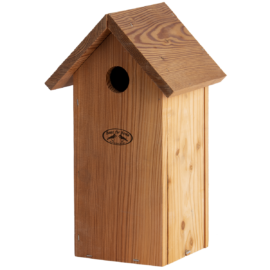How to help your customers get their garden spring-ready
Wednesday, February 17, 2021
Now that the temperature is rising again, everyone is already eagerly looking forward to spring. Therefore, it's time to get ready for the spring season! Here you will find not only what is needed to prepare the garden for spring, but also some handy tips and inspiration for your customers.
Step 1: A good basis without weeds
Before you can start sowing, planting and decorating the garden, it is important to have a good base. So start by removing weeds and other unwanted greenery. This chore is a little tedious, but immediately has a refreshing effect in the garden! Because removing weeds is also a dirty job, gardening gloves are recommended. There is an ideal glove for every job, but when removing weeds we recommend a flexible glove. That way you can feel exactly what and how much you are pulling out of the ground.
To make removing weeds even easier, we have developed the Stainless steel pavement cleaner. With this garden tool, it's a piece of cake to remove weeds between tiles and other difficult spots. This job can take a while, so to have your knees on the cold floor all the time isn't very pleasant. A kneeling pad is an ideal solution. It doens't only provides comfort, but also ensures your clothes to stay clean. Our kneeling pad made of waxed canvas for example, is waterproof and easy to clean. A win-win!

Step 2: Prune, grow, bloom!
Start pruning in the spring, right after the frost season. If certain plants or trees are pruned too early in the year, there may not be enough time to harden them off if frost should set in. You can already prune fruit trees, berry bushes and hedges from March and April. Keep an eye on the weather, these months may surprise us with night frost sometimes.
Most plants, shrubs and trees should be pruned twice a year. The spring pruning not only ensures more flowers and fruit, but also a beautiful shape of the bush or tree. Good equipment is a must here. If a pruning shear has blunt blades, it will cause fraying around the pruning wound, making it more susceptible to fungal attack. In our pruning assortment you will find the best tools for any pruning job.

Step 3: Sow color and life into the garden!
Now that the foundation for the spring garden has been laid, it's time to sow! When doing this, first look at the layout of the garden and the needs of the plant. On which spots will you find more sunlight or more shade for example? It is a shame if seeds that need a lot of sun end up in a shady spot. Then the chance of them hatching is a lot smaller! On the other hand, seeds for plants that like a shady spot should not be sown in a sunny spot. The new seedlings then run the risk of burning out before they have had a chance to emerge.
In recent years, biodiversity in gardens has suffered greatly. With the increase in low-maintenance gardens (more tiles, less greenery), bees and butterflies have a significantly harder time. Do you want to attract more bees or butterflies to your garden? Then look at our special flower mixes for bees and butterflies. Many butterfly species are threatened by increasing urbanization too. The seed mix for butterflies therefore contains seeds for various flowering plants, creating a real butterfly garden! This gives butterflies a better chance of survival and promotes biodiversity in the garden.
Is everything sown? Then it's waiting for the sun to arrive! Fortunately, you can already water the seeds yourself, but with seeds and seedlings it is a precise job. So use a watering can rather than a garden hose, to avoid rinsing out the seedlings! With a watering can equipped with a fine nozzle, you can pour more carefully and dispense better. For those hard to reach spots, for example at the back of the borders, we even have a watering can with an extra long spout!

Tip for the extra bio diverse and attractive garden
Besides attracting bees and butterflies, wild birds are an ideal addition to the garden as well. By hanging suitable nesting boxes and bird houses, there is a good chance that the birds will keep coming back to the garden. The official breeding season begins in March and most birds start building a nest just before the season. With a nesting box or birdhouse, you're not only helping the birds, but you're also taking care of oak processionary caterpillar control. The blue and black tits are crazy about these protein-rich insects, which are a real plague in summer. So be on time and help nature (and yourself) a bit with one of the nesting boxes or bird houses from our range!


















